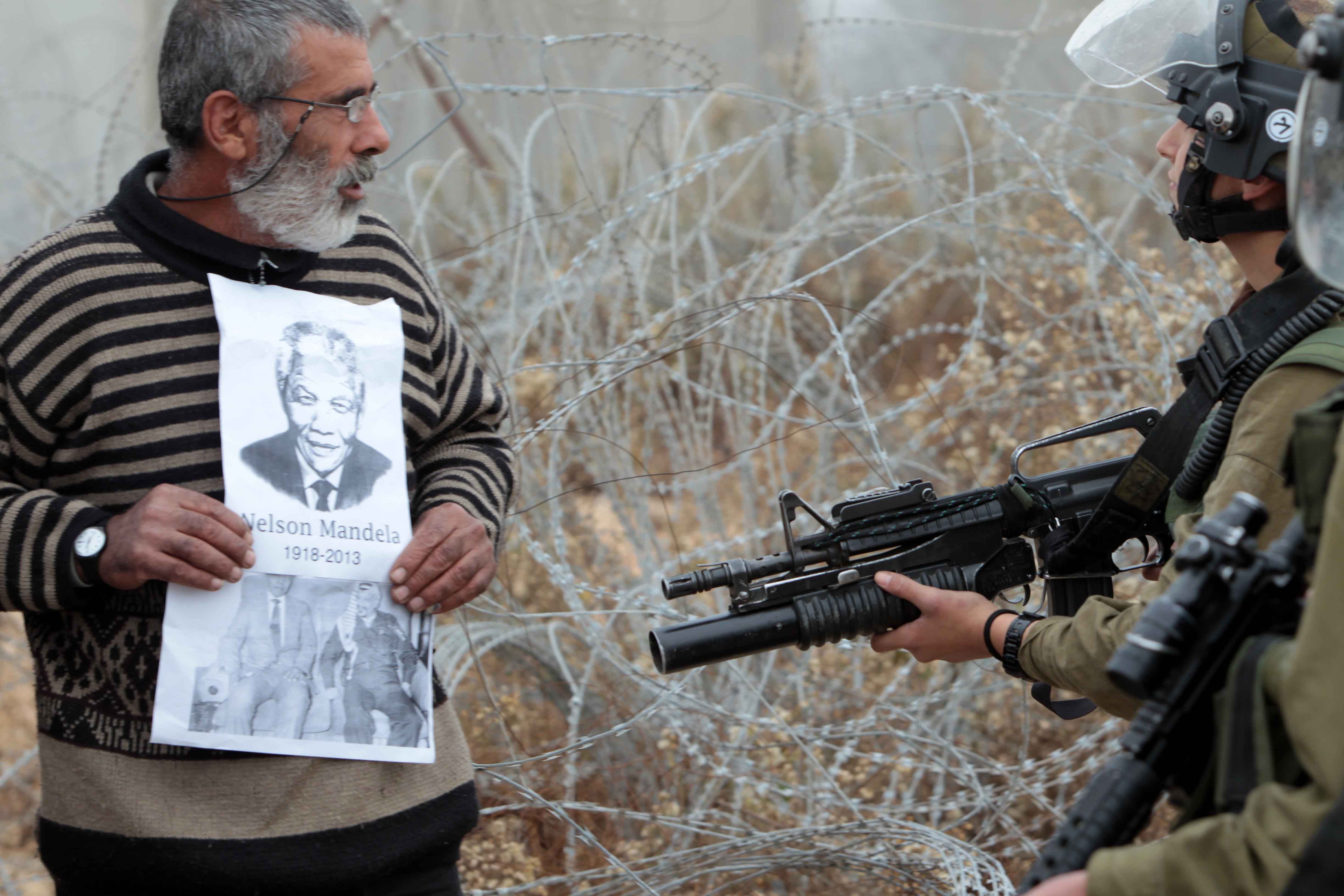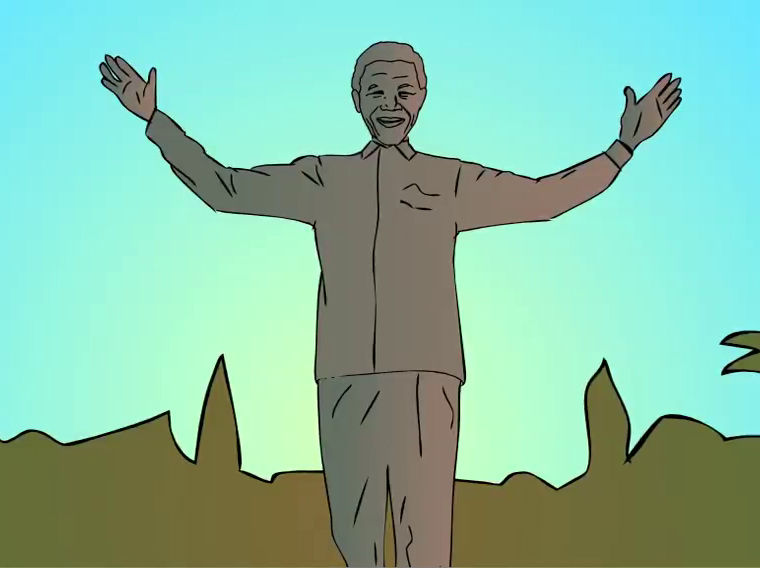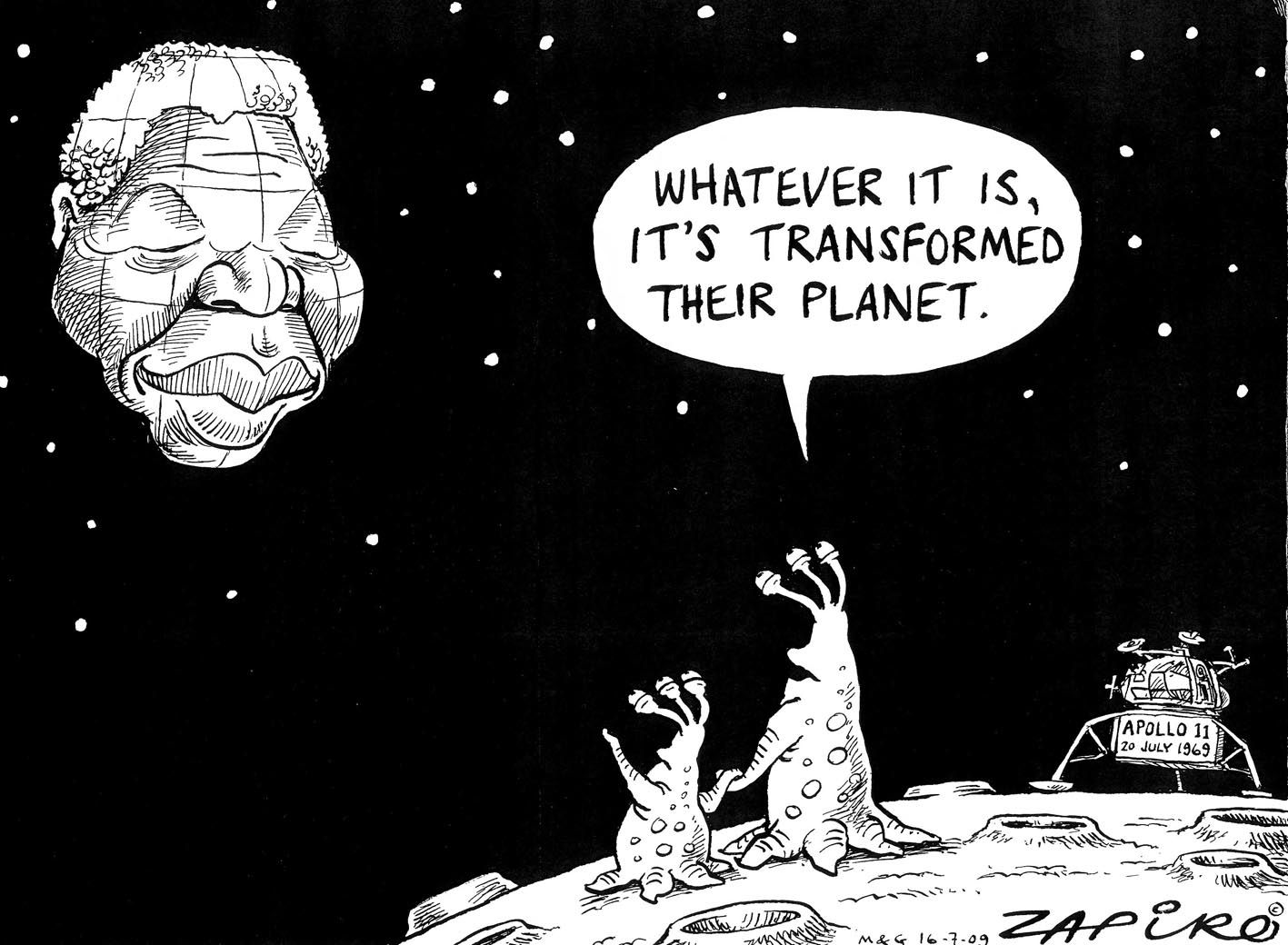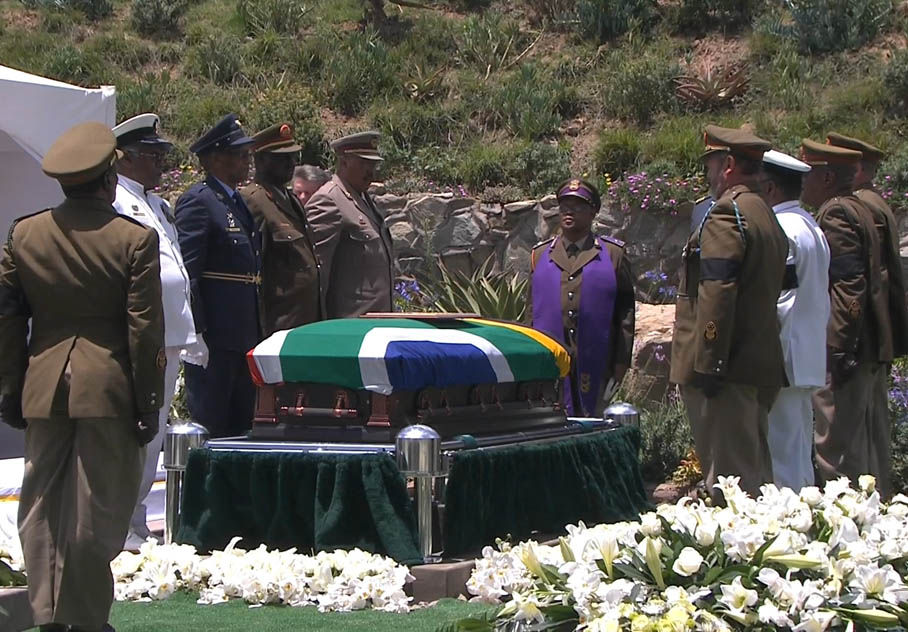
The world pays tribute to Mandela (slideshow)
As South Africans come to terms with the loss of former president Nelson Mandela, the rest of the world bids farewell to Madiba.

Pimples: Saving Madiba's rabbit (video)
Gwede, Mac and Blade try their best to stop the rabbit from whispering in Mandela's ear. But the elusive animal has some tricks up its sleeve.

Zapiro's best Madiba cartoons (slideshow)
From his toughest moments to his most triumphant, Madiba has been an inspiration. Here are some of our favourite Zapiro cartoons about him from 1994 to 2013.

Mandela: SA's greatest son laid to rest (slideshow)
The world watched as Nelson Mandela was finally laid to rest in his hometown of Qunu following a dignified and moving funeral ceremony on Sunday.
The woman with the microphone and brightly coloured knit tam-o'-shanter is speaking in Nelson Mandela's name -- it's emblazoned across her T-shirt -- as she presses villagers in north-western South Africa to be honest about HIV/Aids.
A length of cloth more commonly seen wrapped around rural women's hips is spread on the dusty grass outside the Lerome district middle school where a community meeting has been convened. Nelson Mandela Foundation development worker Lesogo Mooketsi asks everyone in the shade of a rented tent to place a stone on the cloth in memory of any loved one who died of Aids, which has hit South Africa harder than any other country.
"Are we afraid to acknowledge all the people we have lost?" Mooketsi pleads after only a few heed her initial call. Slowly, more file to the cloth -- this time, some carrying fistfuls of stones.
It's a small victory for Mandela's brand of openness. His place in history is certain -- he helped usher in democracy and championed racial harmony in a society devastated by apartheid. The foundation Mandela established is dedicated to ensuring his legacy remains relevant into the future.
Its staff of activists and archivists say the best way to do that is to ensure South Africans understand the faith Mandela placed in bringing men and women together to confront problems and find solutions through dialogue and negotiation.
Mandela, who turns 90 in July, devotes himself these days to the family life he sacrificed to politics in his younger days.
The Nelson Mandela Foundation is increasingly his public face. Ironically, one of the first things director Achmat Dangor did when he came to the foundation last year was to take Mandela's face off logos and promotional literature. Dangor said he was acting at the request of Mandela, who was uncomfortable at being turned into an icon.
Now, instead of Mandela's face, his hands define the foundation. An open hand of friendship or generosity on a T-shirt on a poster, a raised hand of warning when necessary.
"For me, it really symbolises everything that Nelson Mandela stands for," Dangor said. "The ability to reach out, the ability to speak out."
Foundation archivists also are following Mandela's request to shift the focus. Archivist Ruth Muller points to a class photo she stumbled upon last year. It had been sent to the foundation years before experts began organising the archives, and somehow had been separated from any identifying documents.
Muller said she recognised a young Mandela in the back row, and knew immediately it was one of the earliest images of him she had seen. She posted the photograph on the foundation's website, asking surfers if anyone knew details. Newspapers across South Africa took up the mystery.
Among those who responded was Luyolo Stengile, whose grandfather Gilbert Nzimeni was among those pictured.
Nzimeni went from Healdtown, a school in the Eastern Province Mandela attended in the late 1930s, to a career as a teacher.
Nzimeni "taught all his life in the Eastern Cape. He was very poor. He never got rich or famous," Muller said. "It's those kinds of stories that Mr Mandela wants us to tell. It wasn't just one man, it was the community" that built South Africa.
"And today, it's not just one man. It's you."
Gail Behrmann, an independent researcher for books and films about South African history, praises the foundation as a democratic space. It allows room for debate, for example, about whether Mandela did enough during his presidency to combat HIV/Aids -- Mandela himself says he should have done more. Or whether he was a good husband or father.
Foundation archivists make materials available in the spirit of, "This is who the man is, you draw your own conclusions," Behrmann said.
'An archivist has to be an activist'
Chief archivist Verne Harris said he wants South Africans to understand that flawed, ordinary people can make a difference.
"The extraordinary individual, the anointed one, is not a solution, even one as gifted as Madiba," Harris said, using the clan name by which Mandela is known affectionately in South Africa.
"For me, an archivist has to be an activist," Harris said. "This institution ... is not going to be the equivalent of a presidential library, a quiet place to collect stuff. It's about making justice in the world, and it's about using memory resources to make a difference."
In Lerome, an impoverished community of small homes on scrupulously swept lots set against a line of low hills, one woman rose under the tent to say her son died of Aids in 2005. She said it was the first time she had said so publicly. A man said he and other church elders have been discussing buying more land for the cemetery.
It was unusual for a public figure to acknowledge being touched by Aids when Mandela said publicly that his son died of an Aids-related illness in 2005. Great stigma is still attached to the syndrome. Since stepping down as president in 1999, Mandela has campaigned to raise awareness and openness about Aids. An estimated 5,4-million of South Africa's 48-million people have the virus that causes Aids -- the highest total of any country.
"You saw those rocks. I didn't know how many people had died of HIV in our community," 17-year-old high school student Ontiretse Mothudi said after the Lerome forum, vowing to speak with more of her friends about the dangers of unprotected sex.
Mothudi said she had thought of the Mandela foundation as an organisation that built clinics. But she said that without events like the community forum, "people don't know that they should go to the clinics and test [for Aids], they don't know why."
Foundation director Dangor said it was easy to raise money for clinics and schools adorned with plaques bearing Mandela's name. But he worried those buildings would stand empty and meaningless if solutions weren't found for complex problems -- the brain drain of African medical workers to the West, or school curriculums that leave students unprepared for 21st century challenges. Under Dangor, the foundation has moved away from putting up buildings to focusing on encouraging ordinary South Africans to change their societies.
The foundation's donors, who include Microsoft, British Airways and South African business giants like Anglo American, won't see concrete results so quickly now, Dangor acknowledged.
"We're telling them, 'Look at a different kind of legacy,"' he said.
Mothomang Diaho, the foundation official who organises events like the one at Lerome, says the foundation gets letters and phone calls from people across South Africa and around the world asking Mandela to help solve problems big and small. The correspondents seem to expect Mandela to be there for them forever, instead of drawing from his example, she said. She points to a passage from his autobiography, Long Walk to Freedom: "I have always endeavored to listen to what each and every person in a discussion had to say before venturing my own opinion."
Diaho said: "We should take on some of [his] values and principles and do it ourselves, try to find solutions." - Sapa-AP

